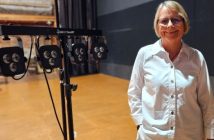Expect rates rises no greater than 3.8 percent, a renewed focus on turning Hamilton to the river and boosted community involvement under new mayor Paula Southgate.
The possible sale of the buildings the council controversially bought south of Victoria on the River is also likely to be on the table sooner rather than later.
Southgate points out she did not vote for the purchase, and says if she doesn’t float the idea of their resale, someone else will.
“I’m going to say we should look at whether we should be keeping these or selling them.
“I want to see that discussion had in terms of the CBD river plan discussions, and I’m putting together a working group around that.”
Her first action in the new job was to create what she describes as a flatter structure, with more committees, in turn giving more councillors roles to play, with new deputy mayor Geoff Taylor charged with CBD and river rejuvenation.
That came after a series of one-on-ones with councillors, which Southgate says shaped her decision around the committee structure and their makeup. She sounds happy with the council voters delivered, saying it’s good to have continuity along with some fresh thinking and greater diversity.
Southgate takes on the job after a convincing victory over incumbent Andrew King by more than 3000 votes and following a lengthy career in local body politics that included chairing the Waikato Regional Council.
She thinks the profile she had built up contributed to her win, while also pointing out she was the highest polling Hamilton East councillor last term, when she famously missed out on the mayoralty by six votes.
This time she put all her eggs in the mayoral basket, choosing not to also run as a councillor, and reaped the rewards.
King may have also paid a price for the 9.7 percent rates rise during his term, and Southgate is not anticipating a repeat.
“I don’t think there is any appetite for future rates increases. And I have made it quite clear that we will not go over the 3.8 percent that was forecast.”
What perhaps gets her most animated is her desire for greater community involvement feeding into council decision making.
“I think there is a mood for increased community engagement and community-led development,” she says. “People want to be engaged in the decisions that shape their lives.”
She points to the Rototuna village hub, with a consultation process which she says she and councillor Ryan Hamilton set up.
The northeast community hub took over and largely ran the public consultation process, she says, with Summerset Village involved in senior consultation and Rototuna High School playing its part with youth engagement. She says that is reflected in the
draft plan.
“It looks quite different from the standard approach of, ‘here’s a lovely drawing of what we intend to do. What do you think? And here are your tick boxes for your submissions.’ And a little paragraph at the end for ‘anything other’.
“It’s a completely different model.”
She says the Rototuna process took about six months.
“I think we’ll have avoided a lot of issues when it comes to the consenting and works on that site, because people have bought into what’s going on. They’ve shaped it.”
When it comes specifically to the business community, Southgate says it is important that she has close relationships with organisations supporting business. She lists the Chamber of Commerce, EMA, regional economic development agency Te Waka, Innovation Park and the airport. “We’ve got to work with them to say, well how do we support the work you’re doing rather than how do we do the work you’re doing?”
Southgate has established an economic development committee and suggests all councillors need access to the thinking of the business community.
“We haven’t all had the same access to our conversations with the business community,” she says.
“Out on the election trail, I became aware of some working groups and some alliances or conversations going on where I was unaware of the detail that was coming out of that.”

River rejuvenation is a major part of Paula Southgate’s plan for the city. Photo: Barker Photography
She says that included one developer referring to a five point plan they had been devising to make it easier for council to work with business. “I was unaware of it. And I worked very hard to be aware of what’s going on, But I hadn’t seen it.”
That plan has some good ideas, she says. “Some of it has got to do with streamlining some parts of the district plan.”
She also wants the council to look at automating aspects of consent processes. “We need to crank it up a little bit and get on with some of those changes. But obviously with a new council and even some of the other councillors who didn’t know the detail like me, we need to sit down and have a good look at that now.
“We don’t want to be waiting for three years and then rolling something out – what can we get doing now? What is the easiest, most cost-effective way to change the way we do business?”
She says chief executive Richard Briggs has ideas about trying to position Hamilton in the medium term as the best council in New Zealand to do business with. “So the conversations are going to be like, ‘Well, what does that look like? What can we do now? How do we start rolling this out’?
On the much contested issue of developer contributions, Southgate says she wants council to have a fresh look. “We have been told that DCs are at the level that they need to be. I have raised the question as to whether there are some barriers to development partly caused by the DCs. What’s the tipping point?”
When it comes to pressure on city boundaries, Southgate sees the logical limit as the expressway while pointing out any changes would need to be negotiated with neighbouring councils
“But remember that Hamilton is also about innovation, and not just the big footprint, industrial activities or manufacturing, but niche business and that’s where we can be focusing to add value.
“I think we need to make it clear we are a town with that whole live, work and play attitude, as I said on the campaign. Why come to Hamilton? Well, because we can create an environment in which you want to establish business.”
As for challenges for the incoming council, Southgate says growth is a big one. “You’ve got to have data-driven response to growth because this is ratepayers’ money. We cannot speculate in the way that private
businesses can.”
Does the council have enough data?
“I think we’re getting the data, and we need to keep reviewing the data because the world keeps changing.
“That’s the nature of cities and that’s the nature of New Zealand at the moment, we’re on the cusp of growth and change. And we need to make sure that we have the population data correct. We need to make sure our business projections are correct as well.”
The other challenge is the need to look after existing assets and facilities in established areas of the city. It’s a fine balancing act between raising acceptable levels of debt and finding new forms of funding, and Southgate says the council will be looking for financial efficiencies. “The financial efficiencies would be there for two reasons, not just one. Firstly, to make sure that potentially we could reduce the rates, but secondly, there’s debt, we still have to pay debt.”
Southgate doesn’t want to get rid of council assets, including “fabulous” Claudelands Event Centre, but would like to see the re-establishment of gully restoration funding and is enthusiastic about the possibility of opening the museum to the river.
“I’m a fan of the museum. I think it’s a treasure that some people aren’t aware of. What I want to do – and I didn’t quite get there with the LTP last time – is to open up the back of the museum towards the river with a terraced platform leading down to the jetty,
“Imagine that – you are coming along the river the river boat, you get to an attractive jetty, there are the beautiful art pieces, the Ripples and Tōia Mai, and you can wander up the path and big open expansive entry to the museum. You can wander through the museum, connect with Victoria Street and go and have something really lovely to eat at one of the fine eateries.”
And looking ahead three years?
“Public transport would be on the rise again and more efficient and effective and in fact I think we’ll see some more models of transport come in like rideshare and others,” she says.
“Community engagement will be far better than it is presently. I want to lift public confidence, public participation and community engagement. The other part of that is I would like to think in three years time the CBD would be more vibrant with more people living, working and playing here.”




